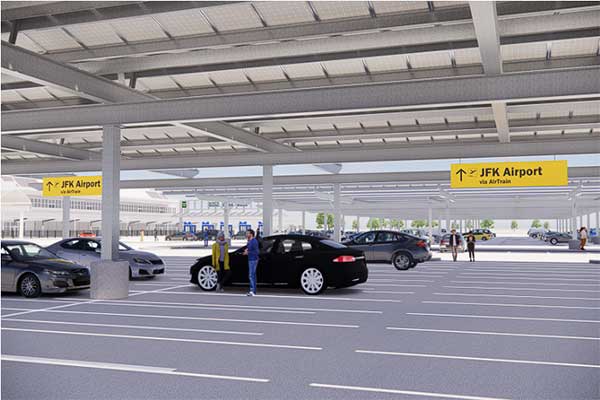John F. Kennedy International Airport in New York is set to host the largest solar array in the state, transforming its long-term parking lot No. 9 into a dual-purpose facility that will continue to serve as a car park while generating sustainable energy.
Initiated on April 23, this ambitious project sprawls across 21 acres and is designed to seamlessly integrate a massive solar carport and an energy storage system.
The initiative, overseen by the Port Authority of New York and New Jersey, aims to produce 12 megawatts of solar power by its completion in 2026. According to Rick Cotton, the executive director of the Port Authority, this development will significantly reduce the airport’s carbon footprint, eliminating over 6,000 tons of greenhouse gas emissions annually.
Additionally, the project features approximately 7.5 megawatts of battery storage capacity to maintain a steady supply of electricity during peak demand times. This is particularly crucial for the airport’s operations, including the JFK AirTrain, which will consume about half of the electricity generated. The remaining power will be fed back into the local grid.
This solar initiative is not just a step towards sustainability but also a community-focused project. The electricity supplied to the grid will help stabilize local energy costs and enhance the resilience of the energy system. Justin Driscoll, CEO of the New York Power Authority, highlighted that the project will provide clean energy to the surrounding neighborhoods and offer financial relief through bill credits to low-income households, especially benefiting residents associated with the New York City Housing Authority (NYCHA).
Designed and to be managed by TotalEnergies for the next 25 years, the project is progressing in phases. The first phase, set to power the airport facilities, is expected to conclude by March next year, while the second phase, which connects the solar power to the local grid, is slated for completion by April 2026.
This initiative represents a significant step in New York’s transition towards renewable energy sources, highlighting the potential of integrating large-scale solar projects within urban infrastructures to foster environmental sustainability and social equity.












Comments